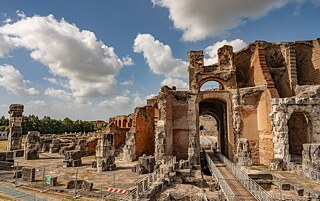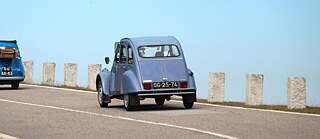Margherita Bettoni Strada del Sole
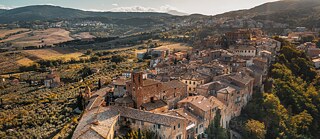
The Autostrada del Sole is Italy’s longest motorway. For many Germans, it epitomises travelling to a holiday destination. To the right and left of the motorway, lesser-known villages are the perfect place to take a break.
Its name alone is enough to send Germans into a state of reverie: Autostrada del Sole, the motorway of the sun. Around 760 kilometres long, the A1 – referred to by insiders as the “Autosole” – is Italy’s longest traffic artery. Connecting Milan with Naples via Bologna and Florence, it took eight years to build, reaching completion in 1964. Its construction united the north with the south. Travelling from Milan to Naples once took around two days; now the journey is possible in less than one day. Many people – Italians and Germans alike – associate the A1 with going on holiday, with lots of happy memories – back-seat sing-alongs, car games, Autogrill cappuccino and panino and, of course, beautiful countryside. The Autosole passes Tuscan cypresses, the Apennine Mountains, but also sleepy, ancient villages perched atop hills to the right and left. When we go on holiday, our main aim is usually to get to our final destination. But each of the six regions the Autosole traverses is full of lesser-known towns and villages that are well worth exploring. Here is a small selection:Lodi (Lombardy)
Not far from the motorway exit of the same name lies the historical town of Lodi, which was founded by Frederick Barbarossa in 1158. The town’s rich history is reflected in its churches: the cathedral with its Romanesque façade, the Renaissance Tempio dell’Incoronata with its elaborate frescoes, and the church of San Filippo Neri, which features some wonderful examples of rococo-style marble. For food enthusiasts, Lodi has a wide range of regional specialities. Start off with some world-famous Grana Padano and a slice of Pannerone, a buttery cheese best eaten with butter and honey. Follow this with risotto alla Lodigiana with salsiccia sausage and red peppers, and for dessert, amaretti biscuits from Sant’Angelo Lodigiano, with almonds and bitter cocoa. Once you’ve satisfied your appetite, it’s much easier to continue your journey, even if you do get caught in the occasional traffic jam.Fontanellato (Emilia Romagna)
Fancy getting get well and truly lost? If so, leave the Autosole at the exit Parma Ovest and stop off at Fontanellato. This is where Italian publisher, graphic designer and patron of the arts Franco Maria Ricci inaugurated the Labirinto della Masone, probably the world’s largest labyrinth, in 2015. The walls consist of around 300,000 bamboo plants, some of which have grown together so densely you feel like you’re walking under a green dome. In the centre of the labyrinth is a museum, where you can admire Ricci’s art collection, including works by Annibale Carracci, Francesco Hayez and Antonio Ligabue. Another attraction is the imposing Rocca Sanvitale, the medieval castle in the centre of the town. Fontanellato is also the perfect place to sample various cold cuts from the Parma region – from Culaccia di Fontanellato salami to Culatello cured ham. This is served here with torta fritta, a pastry deep-fried in lard.
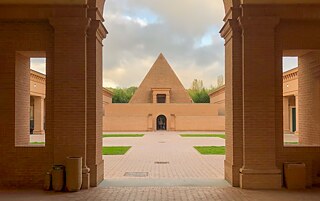
Chianciano Terme (Tuscany)
Nestled amidst hills and woodland, Chianciano Terme, as the name suggests, is famous for its therapeutic waters, which were already popular with the Etruscans. The waters are said to be particularly good for the liver, so good that advertising posters in the 1970s featured the slogan: “Chianciano, fegato san” (Chianciano, healthy liver). Today, the thermal baths are still one of the town’s main attractions, but the archaeological museum is also a must for visitors. You can travel back in time and find out how the Etruscans lived. And finally, if you’re not driving, treat yourself to a glass of local Amaro Santoni, a rhubarb liqueur made from 34 different herbs. To get to Chianciano, exit the motorway at Chiusi-Chianciano or Fabro.
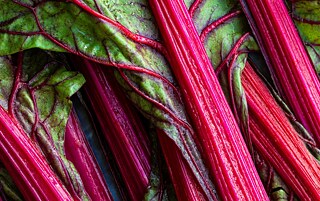
Città della Pieve (Umbria)
Perched on top a hill, Città della Pieve and its church towers can be seen from afar. The medieval town is a maze of small, winding alleyways. You can spend a good hour wandering around, stopping every now and then to admire views of the Chiana Valley from one of the vantage points. Città della Pieve is the birthplace of one of the most important representatives of the Italian Renaissance, Pietro Vannucci, known as Perugino. Some of his work is on display in the cathedral. Culinary specialities here revolve around one local product: saffron. The threads are used to refine Risotto alla Giorgione together with carrots and egg yolk, or add flavour to goulash made with Chianina beef. Città della Pieve, like Chianciano Terme, is easily reached via the Chiusi-Chianciano motorway exit.Bomarzo (Lazio)
A huge monster’s head with a gaping mouth that leads to a room, a crooked house, an elephant, sphinxes and lions … What sounds like a modern-day horror theme park was actually built in the 16th century at the request of flamboyant nobleman Pier Francesco Orsini. The Sacro Bosco (Holy Forest), also known as – surprise, surprise – the Monster Park, is located not far from the small town of Bomarzo. After Orsini’s death, the park was more or less forgotten and visited only by a few people, one of them being Johann Wolfgang von Goethe on his Italian journey. The park was not rediscovered until the 20th century. You can tour the entire park in just over two hours, so it’s the perfect place to stop off on the long drive down the A1. If you want to take a longer break, visit the ancient Christian necropolis of St Cecilia, or fortify yourself with a bowl of acquacotta. Made from stale bread, vegetables and egg, the soup was traditionally a simple staple for local shepherds. You can reach Bomarzo from the Orte exit if you’re coming from the south, or Attigliano if you’re approaching from the north.
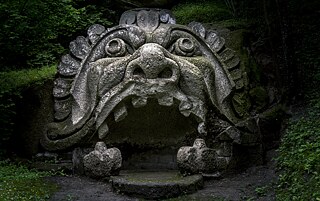
Santa Maria Capua Vetere (Campania)
The Santa Maria Capua Vetere exit comes just before the end of the Autosole. Perhaps because of its proximity to the famous castle of the same name, the actual town of Caserta is often overlooked. Cicero referred to it as “altera Roma”, the second Rome. Reminders of Roman times are the Anfiteatro Campano, Italy’s second largest amphitheatre after the Colosseum, and the Mithraeum, a temple for worshippers of Mitra. The town also boasts several churches that are worth visiting. The cathedral is home to a very special chapel, dedicated to Santa Maria Suricorum, St Mary of the Mice. According to local folklore, small mice licked the leprosy wounds of a Lombard prince and healed him.
